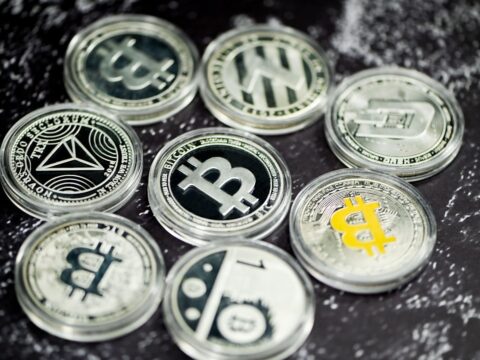
The decentralized platform Ethereum has become increasingly popular in the past few years for creating & carrying out smart contracts. That being said, the idea of gas fees is one feature of Ethereum that has annoyed users. Although gas fees are a crucial part of the Ethereum network, if they are not properly understood, they can be costly and confusing. This post will examine Ethereum gas fees, including what they are, why they matter, how they’re determined, & how users can lower them.
To conduct any kind of transaction on the Ethereum network, you must pay gas fees. Gas fees are the price associated with using the Ethereum blockchain, to put it simply. Processing power is needed for each and every Ethereum network operation, including sending Ether (ETH) and carrying out smart contracts. The units used to measure these resources are called “gas.”. Since the Ethereum network is meant to be secure and decentralized, each transaction and operation must be confirmed by a number of nodes, or connected computers, which is why gas fees are used.
Spam prevention and miner incentive are the two main goals of gas fees. In the Ethereum network, gas fees are very important. First of all, they serve as a deterrent to harmful and spammy activity.
Ethereum keeps the network free of harmful or pointless transactions by charging users for computational resources. Gas fees are another way that miners are encouraged to add transactions to the blockchain. Validating and appending new blocks to the Ethereum blockchain are the responsibilities of miners. Based on the associated gas fees, they order the transactions. Because miners are incentivized to prioritize transactions that offer higher rewards, higher gas fees raise the likelihood that a transaction will be included in the next block.
Gas price and gas limit are the two factors that go into calculating gas fees. The price a user is willing to pay in Ether (ETH) for each unit of gas is referred to as the “gas price.”. The maximum amount of gas that a user is willing to use for a specific transaction or operation is known as the gas limit, on the other hand. Gas fees are computed using the following straightforward formula: gas fees = gas price * gas limit. The total gas fees would be 20 Gwei * 100,000 = 2,000,000 Gwei, for instance, if the gas price is set at 20 Gwei (a unit of Ether) and the gas limit is 100,000.
On the Ethereum network, a number of variables can affect how much gas fees cost. By being aware of these variables, consumers can more efficiently budget for and control their gas expenses. 1. In the event of network congestion on the Ethereum platform, e.g. gasoline prices often rise, and there are a lot of outstanding transactions.
This is due to the fact that miners give priority to transactions that have higher gas fees, which raises the need for processing power. 2. Variations in gas prices: The price of gas is subject to change depending on the state of the market. Gas prices usually increase in times of high demand and may fall in times of low demand. Three.
Type of transaction: The amount of computational resources needed for a given transaction varies. In contrast to executing a complex smart contract, a straightforward Ether transfer uses less gas. In this section, we will examine some typical Ethereum network transaction types & the gas costs that go along with them:1.
Ether transfer: It usually costs about 21,000 units of gas to send ether from one address to another. 2. Implementing a smart contract: Depending on the contract’s complexity, implementing a smart contract on the Ethereum network may be more costly. A few hundred thousand to several million units of gas may be required for the implementation of a smart contract. Three. Execution of smart contracts: Gas fees apply when interacting with a smart contract, such as calling a function or changing a variable.
The complexity of the process and the quantity of processing power needed determine how much gas is needed to execute a smart contract. Although using the Ethereum network entails paying gas fees, there are a few tactics users can take to lower these costs:1. Smart contract optimization: Writing effective & optimized code is crucial when creating smart contracts.
Gas prices may increase as a result of complicated & ineffective code. Users can minimize the amount of computational resources needed, which will lower gas fees, by optimizing smart contracts. 2. To estimate the gas fees for your transactions, use a gas fee calculator.
These online tools are available to users. To give users an idea of the gas fees they can anticipate paying, these calculators consider variables like gas price, gas limit, and network congestion. 3. Pick the right time: When network congestion is minimal, gas prices are typically lower. Users can benefit from cheaper gas costs by keeping an eye on the Ethereum network and timing their transactions well.
Accurately estimating gas prices is essential for users to prevent overspending or transactions getting stuck in the pending stage. An outline for calculating gas prices is provided below:1. Establish the gas limit: Users must first determine the gas limit for their transaction before estimating gas fees. The intricacy of the transaction and the quantity of processing power needed should be taken into consideration when determining the gas limit. 2.
Verify the price of gas: There are several ways to find the price of gas, including Ethereum gas price trackers and gas fee calculators. Customers ought to select a gas price that fits both their needs and their budget. Three. To determine the estimated gas fees, multiply the gas price by the gas limit.
The estimated gas fees, for instance, would be 20 Gwei * 100,000 = 2,000,000 Gwei if the gas price was 20 Gwei and the gas limit was 100,000 Gwei. On the Ethereum network, gas limit is an important factor in transaction processing. The gas limit is the maximum quantity of gas that a user will take for a given transaction. In the event that a transaction uses more gas than it is allotted, it will fail.
It is crucial to set a suitable gas limit in order to guarantee successful transaction processing. A transaction that runs out of gas before it is finished is likely to fail if the gas limit is set too low. However, an excessively high gas limit can result in needless gas costs.
On the Ethereum network, there is a trade-off between transaction speed & gas fees. Miners prioritize transactions when gas fees are higher, which leads to quicker transaction confirmation. On the other hand, since miners may give priority to transactions with higher gas fees, lower gas fees might cause transactions to process more slowly. It’s critical for Ethereum users to strike the correct balance between transaction speed and gas fees. Gas fees may vary depending on the user’s needs; those who can wait to pay less may need to pay more for faster transaction confirmation.
The high gas prices are a problem that the Ethereum community is actively trying to solve. The Ethereum 2.0 upgrade, which aims to improve scalability and lower gas fees, is one noteworthy development. Proof of Stake (PoS), which will take the place of the existing Proof of Work (PoW) consensus mechanism, will be introduced with Ethereum 2.0. PoS is anticipated to result in lower gas costs by lowering the computational resources needed for transaction validation. In addition, partial transaction processing from the Ethereum mainnet is being offloaded through the development of layer 2 scaling solutions like state channels & sidechains.
Both scalability and gas fee reduction are possible with these solutions. The Ethereum network relies heavily on gas fees to reward miners & discourage spam. It is essential for Ethereum users to comprehend how gas fees are determined, what influences them, & how to estimate and minimize them. Users can reduce their gas fees through smart contract optimization, the use of gas fee calculators, and timing transaction execution correctly. We can anticipate more advancements in scalability and lower gas prices as the Ethereum ecosystem develops further, with initiatives like Ethereum 2.0 and layer 2 scaling solutions.
In conclusion, users can navigate the Ethereum ecosystem more effectively by comprehending and managing gas fees, which are an essential part of using the network.






